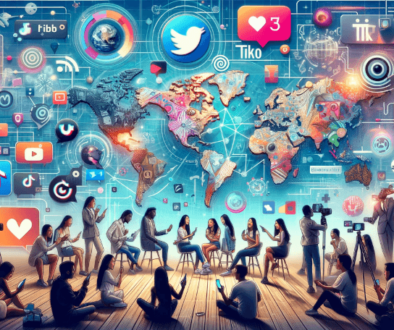Virtual influencers – Metahumans – are the new Chinese Key Opinion Leaders
In China, KOL (Key Opinion Leaders) have grown to be an essential new way to obtain information for consumers.
And given the rapid development of technology, progressively more influencers are appearing virtualized to meet up the needs of a specific brand.
Virtual influencers are no more new and can be observed as an extremely recurring trend today. They often reach an incredible number of followers and works more effectively than some celebrities with regards to selling products.

Virtual idols have three significant advantages over human idols.
- They can certainly maintain a good image and are considered low risk. Human bloggers have a tendency to get swept up in scandals that may plunge their worth as influencers. Virtual idols, however, are (literally) perfect.
- Human influencers are also linked with tight schedules that are not always flexible, but virtual idols are even more customizable.
- Finally, this fresh era of digitized humans offers touched the hearts of young consumers. They are proficient at establishing unique associations with their followers through UGC (User Generated Content material). This sort of interaction is powerful and can generally win a lot of loyal fans.
Created simply by Ranmai Technology, Ayayi is usually China’s first meta-human being influencer, an surreal digitized person essentially. The word metahuman was coined by China’s digital marketing platform Sociable Beta in an content on June 28th.

What exactly are its major advantages more than other virtual influencers? It really is incredible realistic. Ayai’s overall look is much closer to a genuine human than an existing digital idol. With her advanced technology, she can adapt her pores and skin texture to different lamps and shadows, simulating the consistency of a genuine person’s skin.
State-of-the-artwork 3D modeling technology and improvements in light and 3D textures have managed to get possible to create this digital influencer. The take up of light and shadow on his encounter makes her really appear to be a real human being.
In May 2021, Ayayi produced her debut on Xiaohongshu, reached practically 3 million people with her first post, and had practically 40,000 followers overnight. She quickly gained a group of fans for “her perfect look” plus some users shared her futuristic design portraits online.
Users of Xiaohongshu were naturally torn apart concerning whether Ayai was real or perhaps another individual created by AI. She was introduced as the first metahuman in her country.
The appearance of Ayai is a lot closer to a genuine human than various other virtual idols, like the digital singer Hatsune Miku released on Japan in 2007.
Because of her popularity, she was presented in the manufacturer and invited to a special function. Ayayi participated in the “Mickey: True Classic Exhibition” in Shanghai and shared her knowledge with her Xiaohongshu.
Why bother with the effort to create such an authentic, hyper-realistic avatars? Sales! Influencer, KOL Ayayi is certainly, in fact, working with major brands to market their products already.
The marketplace for virtual influencers is expanding in China rapidly, causing technological improvements and extra realistic virtual images.
Expect progressively more companies to find virtual metahuman influencers want Ayayi to wait events and become ambassadors to improve brand awareness. Last week, beauty and health care chain Watsons announced a good partnership with virtual Japanese KOL Imma.



